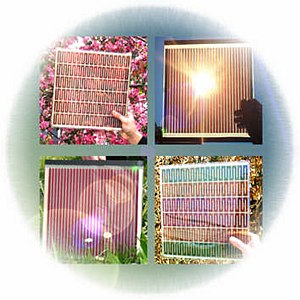A new twist on an old solar cell design sends light ricocheting through layers of microscopic spheres, increasing its electricity-generating potential by 26 percent.
By engineering alternating layers of nanometer and micrometer particles, a team of engineers from the University of Minnesota has improved the efficiency of a type of solar cell by as much as 26 percent. These cells, known as dye-sensitized solar cells (DSSC), are made of titanium dioxide (TiO2), a photosensitive material that is less expensive than the more traditional silicon solar cells, which are rapidly approaching the theoretical limit of their efficiency. Current DSSC designs, however, are only about 10 percent efficient.
One reason for this low efficiency is that light from the infrared portion of the spectrum is not easily absorbed in the solar cell. The new layered design, as described in the AIP’s Journal of Renewable and Sustainable Energy, increases the path of the light through the solar cell and converts more of the electromagnetic spectrum into electricity. The cells consist of micrometer-scale spheres with nanometer pores sandwiched between layers of nanoscale particles. The spheres, which are made of TiO2, act like tightly packed bumpers on a pinball machine, causing photons to bounce around before eventually making their way through the cell.









